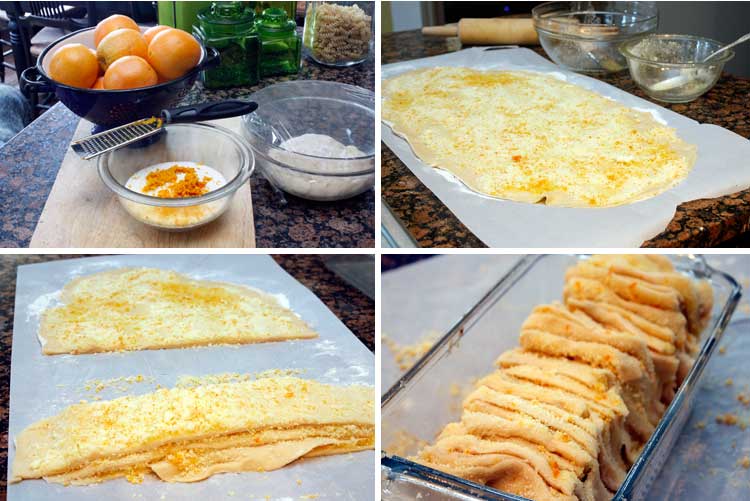Orange Bread

This "Orange Bread" recipe can be made whenever the mood strikes you to have something a little different. With a topping of powdered sugar and soften creamed cheesed whipped with fresh squeezed orange juice, you know everyone is going to love it.
This original orange bread recipe not only tastes delicious but it looks really great on a breakfast or dessert table. For the orange sugar topping you will need sugar, the zest of a couple of oranges and melted butter. For the glaze recipe you will need some orange juice (freshly squeezed with a couple of oranges), powdered sugar and some softened cream cheese. The topping is perfection made of powdered sugar with 4 ounces of softened creamed cheese whipped to a glaze with fresh squeezed orange juice. You can make the glaze as thick or as thin as you want, you just need to keep adding the juice until you get to the consistency that you like. In a small bowl whisk together the cream cheese and powdered sugar and slowly add the orange juice until it is the right consistency.
The orange is thought to have originated in southern China, northeastern India, and possibly southeastern Asia, and that they were first cultivated in China around the time of 2500 BC. In Europe, citrus fruits among them the bitter orange, was introduced to Italy by the crusaders in the 11th century, and were grown widely in the south for its medicinal purposes, but the sweet orange was unknown until approximately the late 15th century or the beginnings of the 16th century, when Italian and Portuguese merchants brought orange trees to the Mediterranean area. Shortly after this time, the sweet orange was quickly adopted as an edible fruit. The orange was considered a luxury item and wealthy people grew oranges in private conservatories, called orangeries. By 1646, the sweet orange was well known throughout Europe.
When it comes to bread there are a variety of combinations and proportions of types of flour and other ingredients, and also many different traditional recipes and ways of preparing bread. As a result, there are wide variety of different types, sizes, shapes, and textures of breads in various regions around the world. Bread may be leavened by a variety of processes ranging from the use of naturally occurring microbes, an example being sourdough recipes, to high pressure artificial aeration methods during preparation or baking. However, there are some products that are left unleavened, either for preference, or for traditional or religious reasons. Many non cereal ingredients may be included in bread, ranging from fruits and nuts to various fats. In many commercial breads you will find additives, some of them non nutritional put in to improve the flavor, texture, color, shelf life, and ease of manufacturing.
Learn MORE / Get RECIPE at My Mother's Daughter
To help with slow website load, we have put all photos for this article here: View photo gallery.









